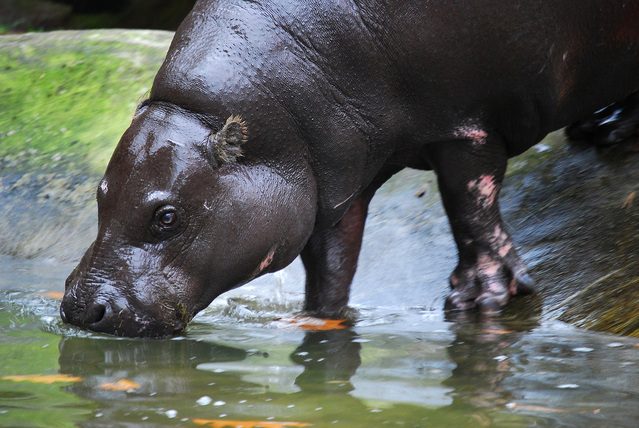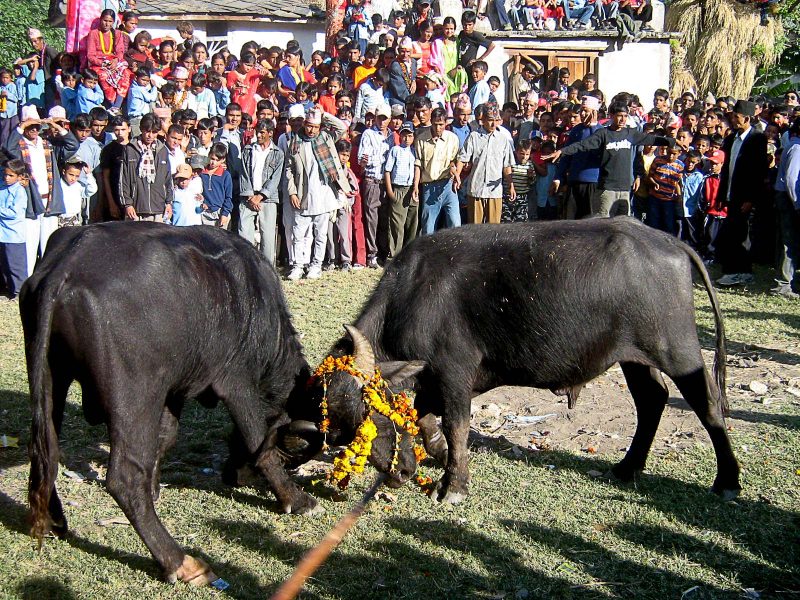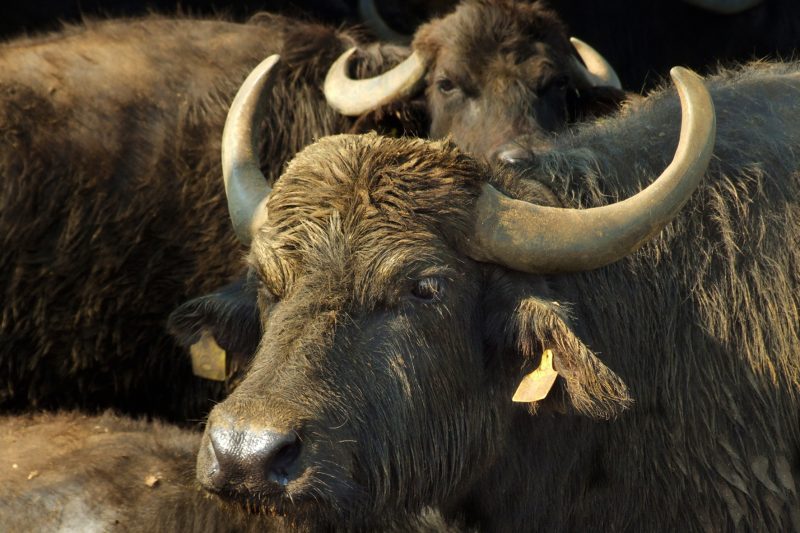Wild Notes On Hippopotamus Of Kenya
Family ancestry tree
The hippopotamus belongs to the family of Hippopotamidae. Historically, morphological comparisons have linked Hippopotamidae to peccaries and pigs. These groups diverged from members of the order Artiodactyla around 45 million years ago. However, molecular studies suggest that cetaceans and hippos have an earlier common ancestor and that they are closely related.
Shorter family member
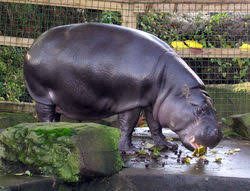
Since 2006, the Union for Conservation of Nature classifies the pygmy hippopotamus as endangered Source Credit: McGill
An interesting living species of the hippopotamus that belongs to the same Hippopotamidae family is the rare pygmy hippopotamus.
Fascinatingly, a pygmy hippo, unlike its other family members, is approximately only the size of a pig. Less gregarious than the common hippos, it occurs in the lowland tropical forests with one or two others or alone. The pygmy hippo is not as aquatic as its other family member, though it hides in the water when pursued. Since 2006, the Union for Conservation of Nature classifies the pygmy hippopotamus as endangered. A fossil in the archeological archives resembling pygmy hippo dates to 21 million years ago.
Peculiar physical characteristics
A male hippopotamus can grow up to 1.5 meters tall, 3.5 meters long, and weigh 3,000 kg. When it comes to the physical size, males weigh around 30 percent more than the females. It has a vast body on stumpy legs, a short tail, an enormous head, and four toes on each of its foot. There is a sharp nail-like hoof on each of the four toes of the hippo that is used to attack predators who come in for the calves. The skin grows to be thicker on the flanks but thinner on the rest of the body and nearly hairless. The color of a hippopotamus is brown to dark grey, with pinkish underparts.
Low energy requirement
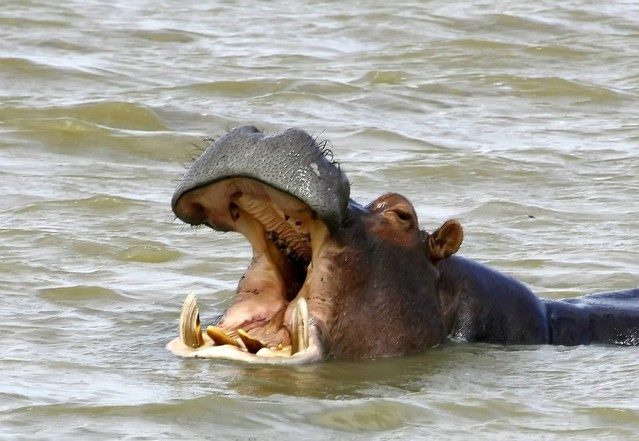
Hippopotamus
Hippos do not eat much vegetation compared to other titan beasts, considering its enormous size. This little consumption is caused by their low energy requirement because they are buoyed in the water much of the time.
Safe from predators
Hippos are safe from all predators because of their aquatic lifestyle, gigantic size, and habits. However, young hippos are vulnerable to lions, crocodiles, and hyenas, especially if they are on their own. But soon after their birth, both the mother and the young join schools that provide some protection against these predators so that the calf remains relatively safe. Although the females live in schools, they do not associate themselves permanently with other cows, though they maintain bonds with the offspring for several years. Although the hippos are safe from the predators of the jungle, human beings prey upon them.
Hunting and poaching
The marine areas where the hippos live become decimated because of an increase in farmlands. When they go trekking at night in groups looking for water and grasslands, they tend to trample and raid these lands. Consequently, human beings resent hippos for ruining their crops. Such destruction led to determined and early efforts to exterminate them. At the same time, hunting in their habitat increased when their meat became a source of food during the wartime chaos. Moreover, after the elephant-ivory ban in 1989 on an international level, hunting pressure on hippos increased because hippo teeth are the next best alternative to ivory. And there continues to be a global demand for hippo teeth as ivory.
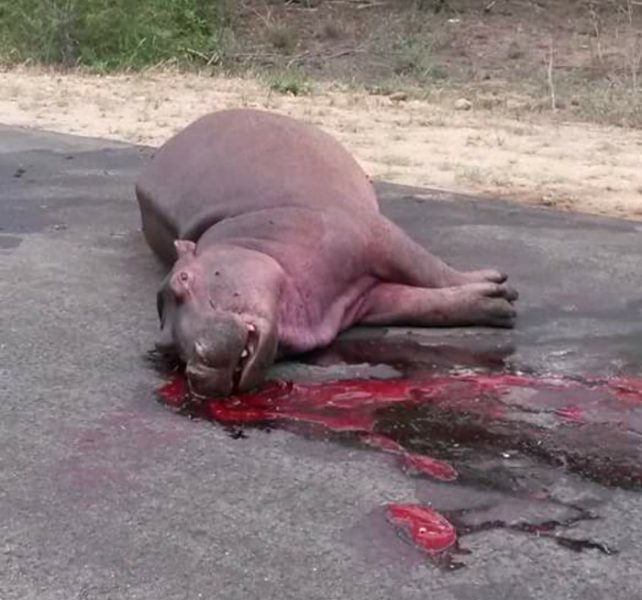
Geographic
Over time, hippos became valued for their meat and ivory, which led to an increase in hippo hunting. The killing of these animals rose sharply not only for their meat and teeth but also for their hide. Thus, a combination of the increase in farmlands, the demand for hippo meat during the war, and the restriction on elephant hunting directly resulted in a decline in the hippo populations.
Threats from humans
Around two or three decades ago, the census indicated that the hippos did not face the risk of extinction. But in just roughly a decade, hunting and habitat destruction have caused its population to drop to a twentieth. These gentle giants are currently at risk from hunters and habitat loss due to urbanization. And today, hippopotamuses are on the brink of extinction because of an increase in poaching. Therefore, the only significant threat to their survival is human beings.
Mutually dependent ecosystem
Some people fear that the decrease in its numbers could affect fishery because its feces provide nutrients for the fishes in lakes and rivers. This reduction of hippos or the erosion of any other living beings or even some species of animals can also impact humans. The ecosystem for all creatures is mutually dependent, meaning that when a species disappears, the entire world is affected.
Survives in Kenya
Once ranging over the whole of Africa and beyond, hippopotamus now lives only in central, eastern, and southern Africa. However, in the recent past, overhunting had exterminated all species of hippopotamus in conjunction with climate change. At the present rate, experts claim that they will soon become extinct if people do not take preservation efforts seriously. Nevertheless, Kenya remains to be a popular destination for international tourists to spot this goliath animal.
Frequently Asked Questions About The Facts About hippopotamus
To receive a colourful digibook about animals with videos, images and text, please fill out the following form or simply email us on safaris@safari-center.com

